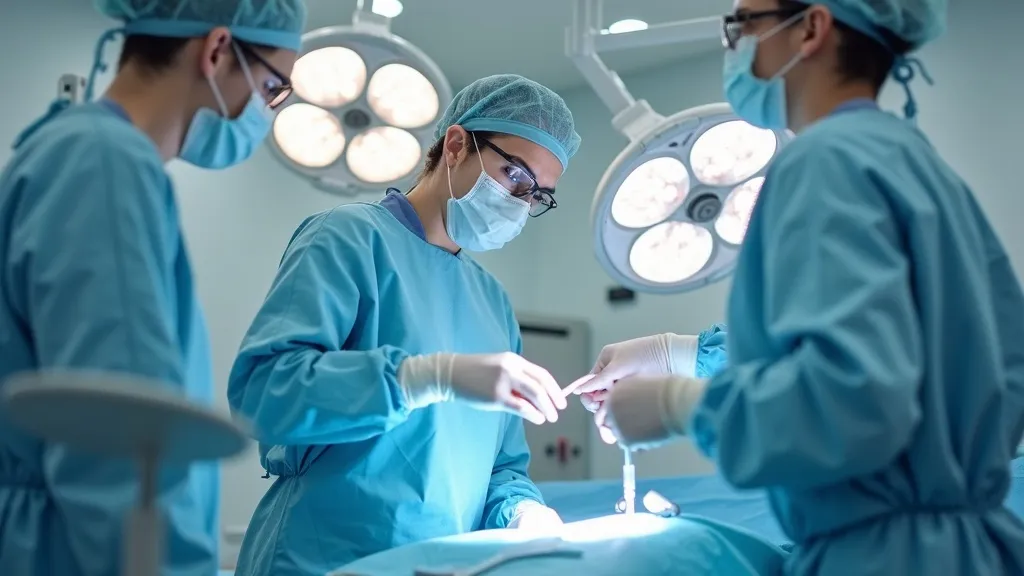Understanding Abdominoplasty and Liposuction
Abdominoplasty and liposuction are popular cosmetic procedures aimed at enhancing body contour. Abdominoplasty, often known as a tummy tuck, involves removing excess skin and fat from the abdomen. Liposuction, on the other hand, targets localized fat deposits to reshape specific areas. This article explores these procedures, their benefits, and considerations for potential candidates.

Introduction to Body Contouring Procedures
The pursuit of an ideal body shape has led many to explore surgical options like abdominoplasty and liposuction. These procedures are designed to sculpt and refine body contours, offering solutions for those struggling with stubborn fat or excess skin that doesn't respond to diet and exercise. Body contouring is not just about aesthetics; it also plays a significant role in boosting self-esteem and improving overall quality of life. As society continues to evolve, so too does the perception of beauty, leading individuals to seek out these transformative options more than ever before.
What is Abdominoplasty?
Abdominoplasty, commonly referred to as a tummy tuck, is a surgical procedure aimed at removing excess skin and fat from the abdomen. This procedure is particularly beneficial for individuals who have experienced significant weight loss or pregnancy, resulting in loose and sagging skin. The surgery not only removes this excess tissue but also tightens the abdominal muscles, providing a firmer and more toned appearance. The procedure involves a horizontal incision made across the lower abdomen, through which the surgeon will remove excess skin and fat. Surgeons may also reposition the navel to create a more natural look post-surgery.
It's essential to recognize that abdominoplasty is not merely a weight-loss procedure; rather, it is designed for body shaping. Ideal candidates are often those who maintain a stable weight but are hindered by sagging skin that cannot be improved through diet or exercise. The results can significantly impact one's lifestyle, as many patients report feeling more confident in their clothing and overall body image.
Exploring Liposuction
Liposuction is a cosmetic surgery procedure that targets and removes localized fat deposits in specific areas of the body. Unlike abdominoplasty, liposuction is not aimed at removing skin but focuses on reshaping areas such as the thighs, hips, buttocks, abdomen, and arms. The procedure is often chosen by those who have pockets of fat that are resistant to traditional weight loss methods. Liposuction can be performed using various techniques, including tumescent liposuction, ultrasound-assisted liposuction (UAL), and laser-assisted liposuction (LAL), each with its unique advantages and recovery times.
The procedure begins with the surgeon injecting a solution of saline, lidocaine, and epinephrine into the targeted area. This solution helps to numb the area and minimize blood loss. A cannula, a thin tube, is then inserted through small incisions to suction out the fat. Patients may choose liposuction for various reasons, including enhancing their body proportions or eliminating fat deposits that have not responded to diet and exercise. However, it is crucial to have realistic expectations about the results, as liposuction does not address skin laxity or other issues that may require additional procedures.
Comparing Abdominoplasty and Liposuction
| Aspect | Abdominoplasty | Liposuction |
|---|---|---|
| Target Area | Primarily the abdomen | Various localized fat deposits |
| Objective | Remove excess skin and tighten muscles | Remove excess fat |
| Ideal Candidates | Post-pregnancy, significant weight loss | Localized fat, normal skin elasticity |
| Recovery Time | Several weeks | Few days to a week |
| Scarring | Visible scars depending on incision length | Minimal scarring from small incisions |
| Effect on Skin Elasticity | Improves skin tightness | No effect on skin elasticity |
Considering the Procedures
Deciding between abdominoplasty and liposuction involves understanding the specific needs and desired outcomes of the patient. A thorough consultation with a certified plastic surgeon is essential to assess the suitability of each procedure based on individual goals, medical history, and physical examination. A professional consultation ensures that patients have realistic expectations and understand the potential risks and benefits. During this consultation, the surgeon will discuss different techniques, recovery times, and the overall process of the procedures to provide a comprehensive understanding.
Additionally, patients should consider their long-term goals and how these procedures fit into their overall health and wellness journey. For instance, maintaining a healthy lifestyle post-surgery is crucial for long-lasting results. Surgeons often emphasize the importance of a balanced diet and regular exercise to sustain the outcomes of these procedures. Moreover, emotional readiness and support systems should also be evaluated, as recovery can be both physically and mentally challenging.
Step-by-Step Guide to Surgery
1. Initial Consultation: Patients meet with a surgeon to discuss their goals, medical history, and undergo a physical examination. The surgeon will evaluate the patient's skin quality, body mass index (BMI), and the areas of concern to recommend the best course of action.
2. Pre-operative Preparations: This includes medical evaluations, discussions about any medications, and lifestyle adjustments. Patients may be advised to stop smoking and to avoid certain medications like aspirin, which can increase bleeding risks.
3. The Surgery: The procedure is performed under anesthesia. Abdominoplasty involves an incision from hip to hip, while liposuction involves small incisions for fat removal. The length of the surgery will depend on the extent of the procedure; abdominoplasty can take several hours, while liposuction is generally quicker.
4. Post-operative Care: Includes managing pain, wearing compression garments, and attending follow-up appointments. Patients should plan for assistance during the initial recovery phase, as movement may be limited. Surgeons often provide detailed recovery instructions, including how to care for incisions and when to resume normal activities.
FAQs
Q: Can abdominoplasty and liposuction be combined?
A: Yes, these procedures can often be performed together for comprehensive body contouring, but it depends on the patient's health and desired results. This combination can provide enhanced outcomes, allowing for both skin tightening and fat removal in one surgical session.
Q: Are there risks associated with these procedures?
A: As with any surgery, there are risks such as infection, scarring, and anesthesia complications. It is important to discuss these with your surgeon. Other risks specific to abdominoplasty may include delayed healing and seroma formation, while liposuction may have risks like contour irregularities or fluid accumulation.
Q: How long before I see results?
A: While initial results can be visible soon after surgery, final results may take several months to become apparent as swelling subsides. Patients should have patience during this healing process, as full results are often revealed after the body has had time to adjust and heal.
Q: Who is not a good candidate?
A: Those with significant health issues, unrealistic expectations, or poor skin elasticity may not be ideal candidates. Additionally, individuals planning to lose a substantial amount of weight or those who are pregnant in the near future should reconsider undergoing these procedures until they are at their desired weight and body condition.
Understanding the Recovery Process
The recovery process is a critical aspect of any surgical procedure. After abdominoplasty, patients can expect a longer recovery period compared to liposuction due to the nature of the surgery. The initial days post-surgery may involve swelling, bruising, and discomfort, which can be managed with prescribed pain medication. It is common for patients to feel fatigued and may need assistance with daily activities during the early stages of recovery.
For abdominoplasty, patients are typically advised to walk around gently to improve circulation and reduce the risk of blood clots. Mobility is essential, but strenuous activities and heavy lifting should be avoided for several weeks. Surgeons may recommend wearing compression garments to support the abdominal area and promote healing.
In contrast, recovery from liposuction is generally quicker, with many patients returning to normal activities within a week. However, similar to abdominoplasty, patients should follow their surgeon's guidance regarding physical activity and care for the treated areas. Swelling may persist for several weeks, but gradual improvements will become noticeable over time.
Long-Term Results and Maintenance
Both abdominoplasty and liposuction can yield long-lasting results when combined with a healthy lifestyle. Maintaining a balanced diet, regular exercise, and proper hydration can contribute to sustaining the improved body contour. It is essential for patients to set realistic goals and understand that these procedures are not substitutes for weight loss or healthy living.
Moreover, some factors such as aging, lifestyle choices, and hormonal changes can impact the long-term results of body contouring procedures. For instance, significant weight fluctuations can alter the appearance of the abdomen or areas treated with liposuction. Patients are encouraged to commit to a healthy lifestyle and consider periodic evaluations with their plastic surgeon to ensure their results remain satisfactory over time.
Real Patient Experiences
Many individuals who undergo abdominoplasty or liposuction share their transformative journeys, highlighting not only the physical changes but also the emotional and psychological benefits. For example, patients report feelings of increased self-confidence and improved body image, which can positively affect their social interactions and personal relationships.
One patient, who underwent an abdominoplasty after her third pregnancy, expressed how the procedure restored her confidence in wearing fitted clothing and engaging in activities without feeling self-conscious. Another patient, who chose liposuction to address stubborn fat in her thighs, shared how the results motivated her to pursue a healthier lifestyle, including regular workouts and improved dietary habits.
These testimonials underline the importance of understanding that every individual’s experience and results may vary. It is crucial for prospective patients to engage in open discussions with previous patients and their surgeons to gain insights into the potential outcomes and recovery process.
Conclusion
Abdominoplasty and liposuction offer transformative results for those looking to enhance their body contours. By understanding the distinctions and benefits of each procedure, individuals can make informed decisions towards achieving their desired body shape. Consulting with a qualified plastic surgeon is crucial to ensure safe and satisfactory outcomes. The journey to body contouring is not solely about physical transformation; it is also a path to increased confidence, improved self-image, and a renewed commitment to health and wellness.
As the interest in body contouring continues to grow, it is essential for prospective patients to seek credible information, weigh their options carefully, and approach their journey with realistic expectations. With the right guidance and support, individuals can achieve the body contours they desire while enhancing their overall well-being.





